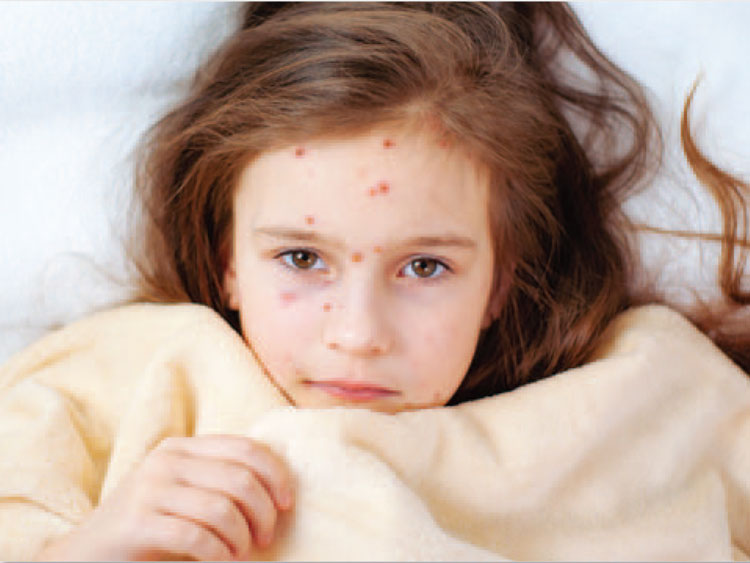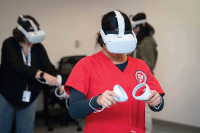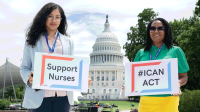Measles has been in the news frequently this year given recent outbreaks of this vaccine-preventable disease. Before the measles vaccine was introduced in 1963, an estimated 3 to 4 million people in the United States were infected each year, with 500,000 reported cases causing 48,000 hospitalizations, 400 to 500 deaths, and 1,000 cases of encephalitis, according to the Centers for Disease Control and Prevention (CDC).
The 2017 MMR (measles, mumps and rubella) vaccination coverage among children ages 19 to 35 months was 92.7%, with coverage levels varying by state. But measles outbreaks are now on the rise. The CDC notes that this year 1,182 cases of measles have been reported from 30 states as of August 8. That’s almost double the most recent previous high of 667 reported cases in all of 2014. Measles complications can range from ear infections to pneumonia, encephalitis, and death. Although measles was declared eliminated in the United States in 2000, many cases are being reported every year.
Measles is a highly contagious virus, and outbreaks often are linked to travelers returning from nations where large measles outbreaks are occurring. This causes measles to spread in local communities where there are pockets of unvaccinated people who are susceptible to the virus.
What can nurses do to promote measles vaccination and minimize these unvaccinated pockets? According to CDC’s best practice guidelines for immunization, vaccinations are recommended for persons of all ages. Nurses should recommend vaccinations and promote the elimination of religious and philosophical exemptions to minimize barriers to vaccinations.
The American Nurses Association’s (ANA’s) Membership Assembly recently voted to update its position statement on immunizations. ANA now supports only medical exemption for immunizations with annual recertification.
As of June 14, 2019, all 50 states permit exemptions based on medical issues, 45 because of religious beliefs, and 15 for philosophical or personal beliefs. If your state legislature is considering eliminating religious and/or philosophical exemptions, contact your representative and ask them to support such legislation. Check the status of exemptions in your state at vaccines.procon.org.
Nurses can work to eliminate philosophical exemptions via targeted education and resources. Since the two-dose recommendation for the MMR vaccine has led to a more than 99% reduction in measles cases, you should strongly recommend to your adult patients and parents or guardians of children that they need to be vaccinated (for those without contraindications). Ensure that you and your family are vaccinated, as well.
Additional recommendations include: client reminder or recall systems, patient or family incentives for being vaccinated, reducing out-of-pocket costs for vaccines, case management practices targeted to hard-to-reach populations, expanded office hours, standing orders so that nurses can quickly vaccinate patients in need, and using immunization information systems to rapidly verify who is and isn’t vaccinated.
If you have questions about measles or vaccines, consult your local health department or contact wwwn.cdc.gov. Also see ANA’s immunization site at anaimmunize.org.
— Chad Rittle is associate professor, nursing faculty, at Chatham University in Pittsburgh, Pennsylvania.
Selected references
Centers for Disease Control and Prevention. Questions about measles. May 17, 2019. cdc.gov/measles/about/faqs.html
Centers for Disease Control and Prevention. Vaccination programs. General best practice guidelines for immunization: Best practices guidance of the Advisory Committee on Immunization Practices (ACIP). July 12, 2017. cdc.gov/vaccines/hcp/acip-recs/general-recs/programs.html
Centers for Disease Control and Prevention. Improving vaccination coverage fact sheet. April 2015. cdc.gov/vaccines/imz-managers/laws/downloads/Improving-Vax-Coverage-Factsheet.pdf
Centers for Disease Control and Prevention. Measles cases and outbreaks. Measles cases in 2019. August 5, 2019. cdc.gov/measles/cases-outbreaks.html
Centers for Disease Control and Prevention. Measles data and statistics. April 16, 2019. cdc.gov/measles/downloads/MeaslesDataAndStatsSlideSet.pdf




















